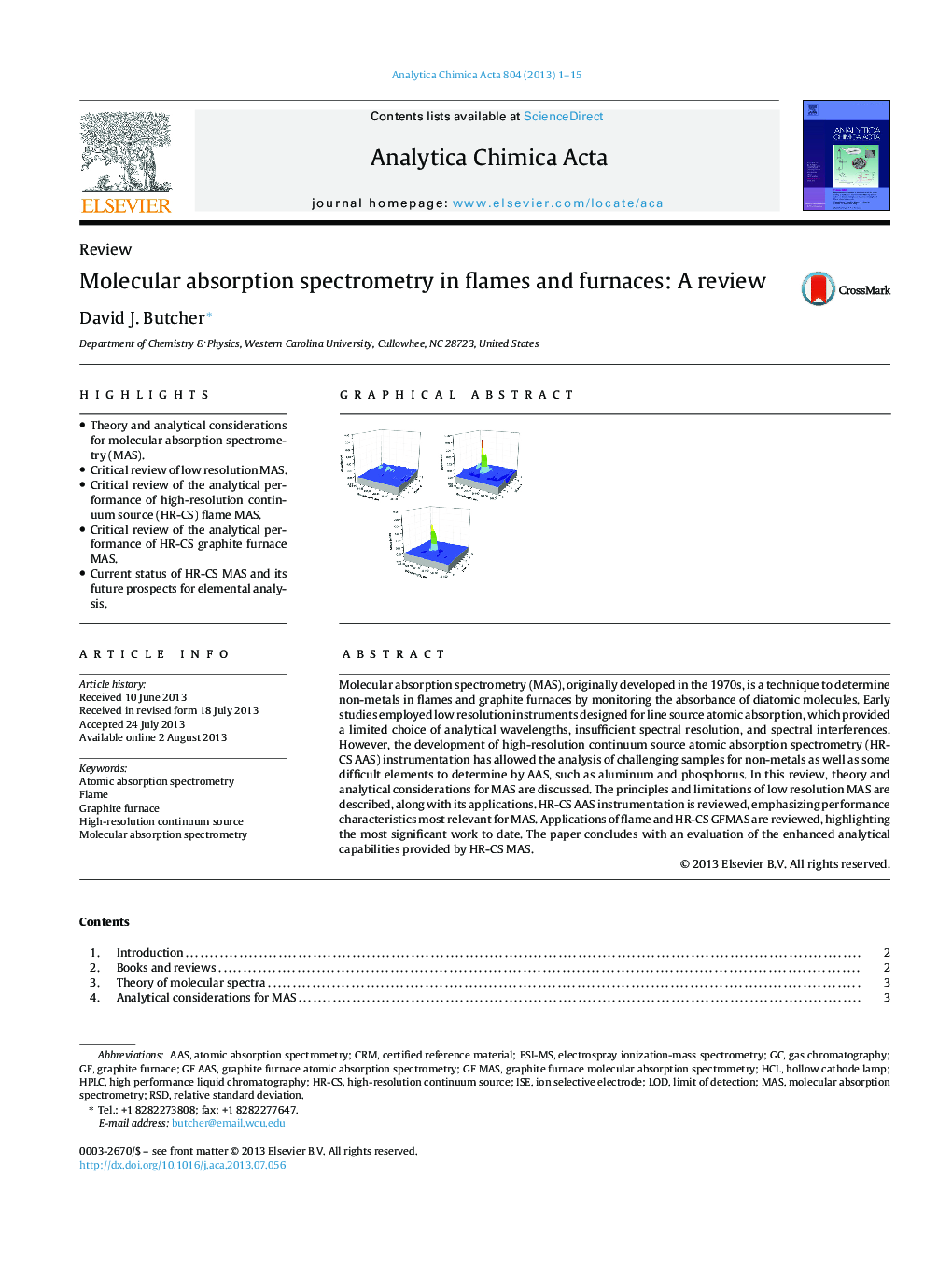| Article ID | Journal | Published Year | Pages | File Type |
|---|---|---|---|---|
| 1165218 | Analytica Chimica Acta | 2013 | 15 Pages |
•Theory and analytical considerations for molecular absorption spectrometry (MAS).•Critical review of low resolution MAS.•Critical review of the analytical performance of high-resolution continuum source (HR-CS) flame MAS.•Critical review of the analytical performance of HR-CS graphite furnace MAS.•Current status of HR-CS MAS and its future prospects for elemental analysis.
Molecular absorption spectrometry (MAS), originally developed in the 1970s, is a technique to determine non-metals in flames and graphite furnaces by monitoring the absorbance of diatomic molecules. Early studies employed low resolution instruments designed for line source atomic absorption, which provided a limited choice of analytical wavelengths, insufficient spectral resolution, and spectral interferences. However, the development of high-resolution continuum source atomic absorption spectrometry (HR-CS AAS) instrumentation has allowed the analysis of challenging samples for non-metals as well as some difficult elements to determine by AAS, such as aluminum and phosphorus. In this review, theory and analytical considerations for MAS are discussed. The principles and limitations of low resolution MAS are described, along with its applications. HR-CS AAS instrumentation is reviewed, emphasizing performance characteristics most relevant for MAS. Applications of flame and HR-CS GFMAS are reviewed, highlighting the most significant work to date. The paper concludes with an evaluation of the enhanced analytical capabilities provided by HR-CS MAS.
Graphical abstractFigure optionsDownload full-size imageDownload as PowerPoint slide
